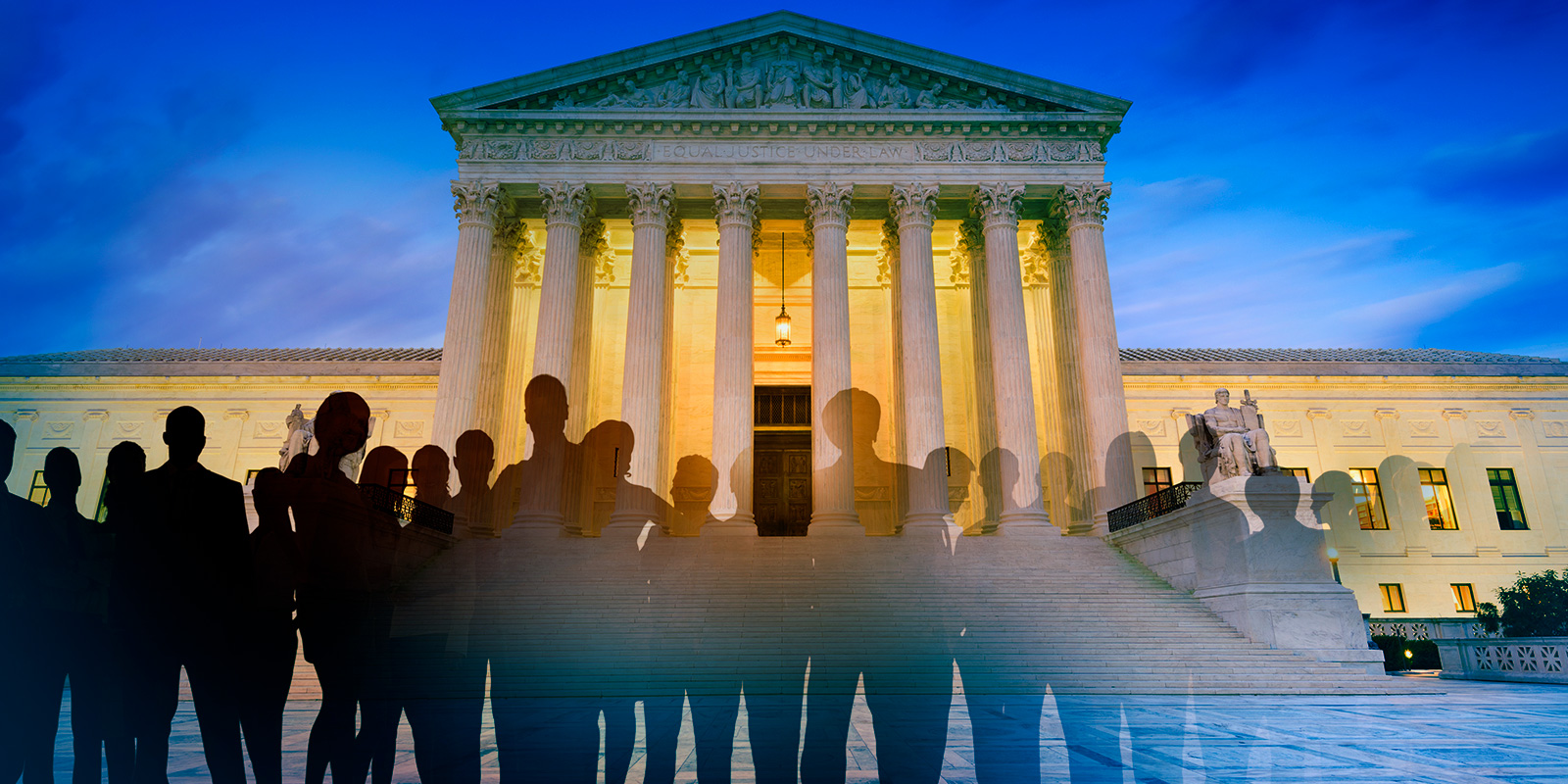
Supreme Court Narrows Article III Standing in Damages Actions
In Short
The Development: The U.S. Supreme Court decided TransUnion LLC v. Ramirez, vacating a class-action judgment and holding that much of the class lacked Article III standing to seek damages for statutory violations.
Its Significance: The decision places new restrictions on lawsuits, particularly class-action lawsuits, in cases in which plaintiffs allege statutory violations that have not resulted in real-world harm to them. The Court strengthened limits on Congress's power to define what constitutes an Article III injury; curtailed the ability of plaintiffs to seek damages over violations that create only a risk of harm; and limited the ability to sue over "informational injuries."
Looking Ahead: Defendants in federal-court lawsuits will have new opportunities to seek dismissal of claims in cases involving alleged violations of statutory rights that do not cause real-world harm. Such arguments can be particularly important in class-action lawsuits brought under statutes like the Fair Credit Reporting Act that provide for statutory damages.
On June 25, 2021, the U.S. Supreme Court decided TransUnion LLC v. Ramirez, 20-297, vacating a class-action judgment and holding that plaintiffs lack Article III standing to seek damages for a private defendant's statutory violations unless plaintiffs can show an actual—and not merely potential—real-world injury.
In Ramirez, a class of 8,185 individuals sued TransUnion under the Fair Credit Reporting Act (FCRA) for failing to use reasonable procedures to ensure the accuracy of their credit files. The class members received reports from TransUnion erroneously indicating that their names "potential[ly] match[ed]" a name on the U.S. Treasury Department's Office of Foreign Assets Control (OFAC) list of terrorists, drug traffickers, and other serious criminals. But only 1,853 of the class members were shown to have had this information shared by TransUnion with third parties. The plaintiffs also complained that the format of certain mailings sent to them by TransUnion violated the FCRA's disclosure and summary-of-rights requirements, which allow consumers to learn of and correct inaccuracies in their credit files before they are disseminated to third parties. A divided panel of the Ninth Circuit held that all 8,185 class members had standing on each of their statutory claims.
The Supreme Court reversed in a 5-4 opinion. Writing for the majority, Justice Kavanaugh reaffirmed that, to establish the concrete harm required for Article III standing, the asserted harm must have "a 'close relationship' to a harm traditionally recognized as providing a basis for a lawsuit in American courts—such as physical harm, monetary harm, or various intangible harms including (as relevant here) reputational harm."
The Court cautioned against excessive deference to Congress's recognition of an injury in fashioning a cause of action, explaining that Congress "may not simply enact an injury into existence, using its lawmaking power to transform something that is not remotely harmful into something that is." In other words, Congress can create "an injury in law," but Article III demands plaintiffs also show "an injury in fact." Requiring a traditionally recognized, real-world harm—and not one merely deemed a harm by Congress—prevents a "regime where Congress could freely authorize unharmed plaintiffs to sue defendants who violate federal law," which "not only would violate Article III but also would infringe on the Executive Branch's Article II authority" to choose "how to prioritize and how aggressively to pursue legal actions against defendants who violate the law."
Applying these principles to plaintiffs' reasonable-procedures claim under 15 U.S.C. §1681e(b), the Court held that only the 1,853 class members whose reports were disseminated to third-party businesses suffered a concrete harm sufficiently similar to the traditional "harm from a false and defamatory statement." The remaining 6,332 class members did not have standing to sue under §1681e(b), for two reasons. First, the mere existence of misleading OFAC information, absent distribution, cannot constitute concrete injury because defamation—the only "historical or common-law analog" to the harm alleged—requires publication. Second, and contrary to the suggestion of some prior case law, a mere risk of future concrete harm—here, future publication of the misleading OFAC alert—cannot alone establish standing in a suit for damages. In other words, risk of future harm cannot support a suit for backward-looking damages where hindsight can show whether the risk actually materialized and does not alone amount to Article III harm.
Regarding plaintiffs' claims that the TransUnion mailings deprived them of their right to receive information in the format required by the statute, the Court held that plaintiffs failed to demonstrate that they suffered any harm at all. For example, the class members failed to present evidence that they opened the mailings or detrimentally relied on the information therein. Even if they had, the harm was not one traditionally recognized by American courts.
The Court also held that the plaintiffs had not shown a concrete "informational injury" as recognized in Federal Election Comm'n v. Akins, 524 U.S.11 (1998) and Public Citizen v. Department of Justice, 491 U. S. 440 (1989). First, because plaintiffs alleged only that the information was incorrectly formatted, they had not actually failed to receive any required information. Second, Akins and Public Citizen are distinguishable because they involved public-disclosure or sunshine laws entitling all members of the public to certain information. Third, the Ramirez plaintiffs did not identify any downstream consequence, like a hindered ability to correct erroneous information, flowing from their failure to obtain certain information. "An 'asserted informational injury that causes no adverse effects cannot satisfy Article III.'" The Court thus rejected the argument, often made by plaintiffs, that informational injury creates standing without a showing that the alleged deprivation of information resulted in some harm.
Justice Thomas, joined by three others, dissented. In his view, Congress can create legal rights of private persons enforceable in federal court, and "injury in law to a private right [is] enough to create a case or controversy." The dissent criticized the majority for, in the name of separation of powers, limiting cognizable harms to those the Court views as similar to those recognized at common law, particularly here where "Congress, the President, the jury, the District Court, the Ninth Circuit, and four Members of this Court" "think that a person is harmed when he requests and is sent an incomplete credit report, or is sent a suspicious notice informing him that he may be a designated drug trafficker or terrorist, or is not sent anything informing him of how to remove this inaccurate red flag." Justice Kagan also dissented separately, joined by two others, to further clarify that she would not do away with the requirement for "a concrete injury," but would defer to Congress's view of a concrete injury, only "overriding an authorization to sue … when Congress could not reasonably have thought that a suit will contribute to compensating or preventing the harm at issue."
Four Key Takeaways
- After Spokeo, Inc. v. Robins, 578 U.S. 330 (2015), some courts faced with the question of Article III injury weakened the injury-in-fact requirement by holding that courts should defer to Congress’s decision to authorize lawsuits for the types of injury at issue. Ramirez emphasized that Article III limits Congress’s power, and that courts must determine whether a real-world injury exists without excessive deference to Congress.
- Ramirez rules out mere risk of harm as Article III injury in damages actions, thereby eliminating a class of cases in which plaintiffs have argued that violations that merely placed plaintiffs at risk of harm were sufficient to create standing to sue.
- The decision also made clear that "informational injuries" are not an exception to injury-in-fact requirements, but rather ordinarily satisfy Article III only if they produce some actual adverse effect.
- The Court expressly held that a federal court in a class action only has jurisdiction to award damages to class members who suffered Article III injury. The potential need to make that determination on an individual basis may increase the obstacles to class certification in appropriate cases.






